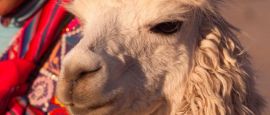Peru History, Language and Culture
History of Peru
Before the Spanish invasion of Latin America in the early 16th century, many advanced cultures had settled in present-day Peru culminating in the vast Inca Empire. The Spanish imposed its cultural practices on the country, in everything from religion to building construction, and this quickly became very widespread as the country was brought under its control.
However, owing to the geography of the country, the smaller, more remote groups of indigenous peoples living in the mountains were largely untouched by Spanish culture. After centuries of colonial rule, Peru declared independence in 1821, and the revolutionary leader Simón Bolívar took over the running of the country.
Unfortunately, relations between Peru and its neighbours were not smooth, and over the next 100 years the government had its hands full trying to fight wars while keeping the economy stable. The War of the Pacific (1879-1883) between Chile and Peru all but bankrupted the country, leaving it little chance to recuperate. From 1914 onwards, Peru seemed to lurch from one military coup to another, some more destructive than others. Added to which, throughout the 1980s, it also had to combat the Sendero Luminoso (Shining Path) extremist guerrilla group belonging to the Peruvian Communist Party, resulting in thousands of deaths.
Since 1990, Peru has been trying to recover and sustain economic growth, and it is now one of the fastest-growing economies in South America. Despite its booming modernisation, however, tribal life remains in many ways the same today as it was before the Spanish conquest, with indigenous people still dressing in traditional clothes, living in agriculture-based communities and speaking the original languages. Quechua, which was spoken by the Incas, is still widely used in Peru, with an estimated 6 to 8 million speakers. Likewise, the physical characteristics of indigenous peoples remain distinctly Amerindian, whereas in the bigger cities you are more likely to see lighter skin and eyes, and more Western features.
Peru has suffered through surges of drug trafficking, which have threatened the recent relative peace of the country. Some estimate that Peruvian cocaine exports have overtaken those of Colombia.
Did you know?
• Abimael Guzmán, leader of the Sendero Luminoso movement, was finally captured in a hideaway above a ballet school in a plush Lima neighbourhood.
• The Yavarí is a floating hotel on Lake Titicaca, built as an iron steamboat in England in 1861 and transported from the coast of Peru in pieces by mules.
• The Callao, Lima & Oroya Railway is the second-highest railway line in the world, reaching 4,783m (15,692ft) in the Andes, after a journey from sea level at Lima.
Language in Peru
Spanish and Quechua are the official languages. Aymara is spoken in the Lake Titicaca area. Many other dialects exist in the jungle regions. English is spoken in major tourist areas.
- Beer = Cerveza
- Closed = Cerrado
- Danger = Peligro
- Do you speak English? = ¿Habla inglés?
- Doctor = Médico
- Eight = Ocho
- Eighty = Ochenta
- Entrance = Entrada
- Exit = Salida
- Fifty = Cincuenta
- Five = Cinco
- Forty = Cuarenta
- Four = Cuatro
- Friday = Viernes
- Goodbye = Adiós
- Hello = Hola
- Hotel = Hotel
- How are you? = ¿Qué tal estás?
- How much does it cost? = ¿Cuánto es?
- I'm very well = Estoy muy bien
- I don't understand = No entiendo
- I feel ill = Me encuentro mal
- Menu = Carta
- Monday = Lunes
- My name is = Me llamo ...
- Nine = Nueve
- Ninety = Noventa
- No = No
- One = Un / uno / una
- One Hundred = Cien
- One Thousand = Mil
- Open = Abierto
- Please = Por favor
- Restaurant = Restaurante
- Saturday = Sábado
- Seven = Siete
- Seventy = Setenta
- Six = Seis
- Sixty = Sesenta
- Sunday = Domingo
- Ten = Diez
- Thank you = Gracias
- Thirty = Treinta
- Three = Tres
- Thursday = Jueves
- Today = Hoy
- Toilets = Servicios
- Tomorrow = Mañana
- Tuesday = Martes
- Twenty = Veinte
- Two = Dos
- Wednesday = Miércoles
- Where is ? = ¿Dónde está?
- Wine = Vino
- Yes = Sí




 You know where
You know where